9 Sweet Shelf-Stable Sweeteners to Prep
Looking for shelf-stable sweeteners to prep? When it comes to preparing for emergencies, the average prepper already has a decent supply of non-perishable foods and canned goods tucked away in their pantries. Maybe that’s you? But I want you to consider something for a moment. What if you were stuck eating these foods for a longer period of time than what you would have expected? Your family would quickly grow tired of them and wish there was something sweet and delicious they could be enjoying.
That’s why stocking up on shelf-stable sweeteners would also be a great idea for every prepper. After all, there needs to be something to help you take your mind off of your situation. Wondering which sweeteners are the best for long-term storage? I’d love to help! These are shelf-stable sweeteners to prep that every prepper should have set aside for any emergency.
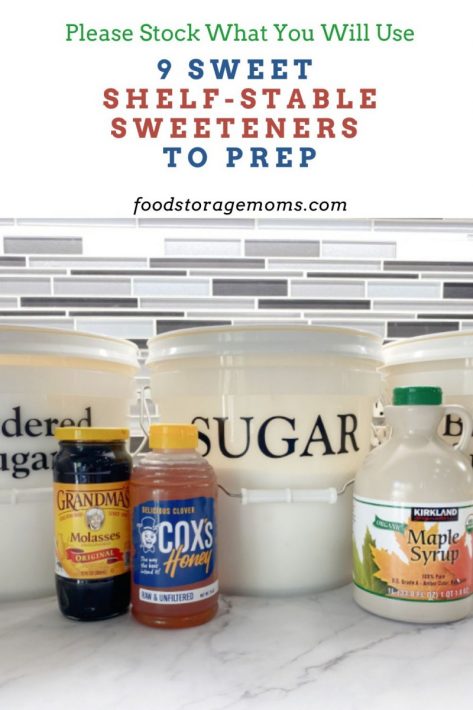
9 Sweet Shelf-Stable Sweeteners to Prep
1. Honey
Honey is arguably one of the best sweeteners for preppers to get their hands on because it will last indefinitely if stored properly. That means you’ll never have to worry about your honey going bad. Just make sure to keep it in an airtight container and away from any heat sources.
Please store in quart or pint-size mason jars, plastic containers break down, and then the honey leaks through the cracks.
But even if you do notice that your honey supply is starting to crystalize, that doesn’t mean that it’s necessarily gone bad. Simply place the container in a pot of warm water and stir until the honey becomes liquid again.
Raw honey is considered to be the healthiest type of honey that has the most health benefits for you and your family, but there are a few other varieties for you to consider as well. Consider trying each of those listed below and then deciding which honey your family prefers.
- Clover-Honey
- Wildflower Honey
- Tupelo
- Avocado Honey
- Buckwheat Honey
2. Molasses
Surprisingly, a lot of people don’t seem to view molasses as a sweetener, but they’re missing out. It too has a long shelf-life. In fact, it can last for up to 2 years without going bad. But like honey, you’ll want to make sure to store molasses in an airtight container to prevent it from hardening.
Molasses is a great sweetener to have on hand, especially when it comes to baking. So if you find yourself with some extra time on your hands during an emergency, you could whip up some delicious molasses cookies, or perhaps some shoo-fly-pie! Molasses is also considered hygroscopic, which means it is part of a family of items that can help preserve your baked goods and keep them from going stale. It’s also fairly common for molasses to be used in cures and brines in order to preserve meat.
For past generations, molasses was a mainstay when it came to adding sweetness to a recipe. Since then so many of us have relied on regular sugar to sweeten things we make. Don’t be afraid to give this sweetener a try the next time your recipe calls for sugar, I think you’ll be pleasantly surprised how good it will make the finished product taste.
3. Maple Syrup
While maple syrup doesn’t have as long of a shelf life as honey or molasses, it’s still a great sweetener to have stored away. It can last for up to a year if stored in an airtight container in a cool, dark place.
Maple syrup is most commonly used on pancakes and waffles, but it can also be used in baking or as a sweetener for oatmeal and other breakfast foods. And if you find yourself running low on supplies, you can always boil down some water and mix it with maple syrup to create a simple sugar solution that will last much longer.
Like molasses, maple syrup has been used for generations as a sweetener, particularly in the northeastern states where maple trees are so common. Again, give it a try and see if you like the special flavor it adds to your recipes.
Be cautious when you shop for maple syrup. There are lots of imitations out there with varying texture, flavor, and shelf life. Yes, they tend to be less expensive, but I always have the attitude to buy right the first time if you’re counting on quality. That applies to almost everything I purchase!
4. Brown Sugar
Brown sugar is another sweetener to think about. Although its shelf-life is considered indefinite, don’t bet on it. It can last for months, or up to 2 years, if stored properly. Most of you are well aware that brown sugar has a tendency to harden over time. To prevent this from happening, simply store your brown sugar in an airtight container with a piece of bread.
The bread will help to keep the brown sugar moist and prevent it from hardening. You can also use brown sugar in baking or as a sweetener for coffee and tea. It’s also a great way to add a touch of sweetness to savory dishes like roasted meats or vegetables.
I stopped buying brown sugar because you can make it for less money. How to Make Brown Sugar
5. Powdered Sugar
Powdered sugar is certainly a great sweetener to have on hand, especially if you enjoy baking. It has a long shelf life and can last for up to a couple of years if stored properly. And what’s nice about powdered sugar is that it doesn’t have a tendency to harden over time. Similar to brown sugar, powdered sugar is wonderful for sweetening coffee and tea while adding just the right amount of sweetness to vegetables and roasted meats.
6. Agave Syrup®
If you have a lot of friends or family members who are vegan or have gluten allergies, having an emergency stockpile of agave syrup® would be an absolute must! Agave syrup® is also a low-glycemic sweetener, which means that it won’t cause your blood sugar levels to spike the way that other sweeteners can.
And like honey, agave syrup® has a long shelf life and can last for years if stored properly. Just make sure to keep it in an airtight container and away from any heat sources.
7. White Cane Sugar
Cane sugar is another one of those sweeteners with a decent shelf life. It’s definitely a staple item that every baker should have in their kitchen whenever they’re planning on following a sweet recipe.
It can last for up to 2 years if stored properly. And like brown sugar, cane sugar has a tendency to harden over time. But you can prevent this by storing it in an airtight container with a piece of bread.
8. Stevia®
Stevia® is a relatively new sweetener on the market, and it’s derived from the stevia ® plant. It’s considered to be a natural alternative to sugar and it has a very long shelf life. In fact, it can last for many years without ever going bad.
Stevia® is mostly used in baking, while some people prefer to use it as a sweetener for coffee and tea. And like agave syrup, stevia® is also a low-glycemic sweetener which means that it won’t cause your blood sugar levels to spike. This is one of my favorite shelf-stable sweeteners to prep and worth checking out.
9. Splenda®
And last but not least, there’s Splenda®. Splenda ® is a type of artificial sweetener that can be used as a sugar substitute. You can use it in baking, or simply add it to coffee and tea. Either way, it’s a great way to add sweetness without all the calories. Splenda®: According to their website, the products are labeled with best by used dates.
Shelf Life of Sweet Shelf Stable Sweeteners
- Honey: Will last indefinitely. Please store in smaller containers, mason quart or pint jars are great. Plastic containers will break down after a few years.
- Molasses: I quote the USDA website: “Unopened molasses can be stored at room temperature for 12 months. After opening, store at room temperature for 6 months for best quality.”
- Maple Syrup: I quote the USDA website: “Before opening, all maple syrup can be stored in the pantry for about a year. After opening, genuine maple syrup should be stored in the refrigerator and will last about a year. Opened jugs of imitation maple syrup can be stored in the pantry for about a year.”
- Brown Sugar: It will last indefinitely, but it’s best to use it within 2 years. If you live in a very dry area, you may want to freeze it.
- Powdered Sugar: It’s best if used within two years.
- Agave Syrup®: It’s good for about two years.
- White Cane Sugar: It’s best used within 2 years. I just opened a #10 can of sugar from a church-sponsored canning company and the sugar had gone bad. It smelled so bad, it was for sure rancid.
- Stevia®: I quote the Stevia Website: “Stevia In The Raw® Packets, Approximately four years from the date of manufacture”
- Splenda®: According to their website, the products are labeled with best by used dates.
In case you missed these posts:
- 11 Canned Meat Ideas I Recommend
- 18 Meals In A Can I Recommend
- 11 Cans Of Fruit I Recommend
- 15 Canned Vegetables I Highly Recommend
Final Word
So, there you have it! These are just a few of the shelf-stable sweeteners to prep that every prepper should have to help their families get through the toughest of times. With these sweeteners in your pantry, you’ll be prepared for any emergency situation and your family will certainly be most grateful you had them. May God Bless this world, Linda

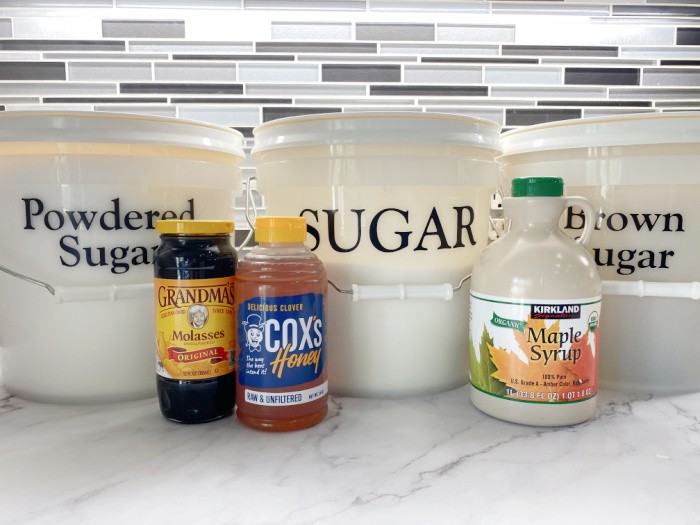

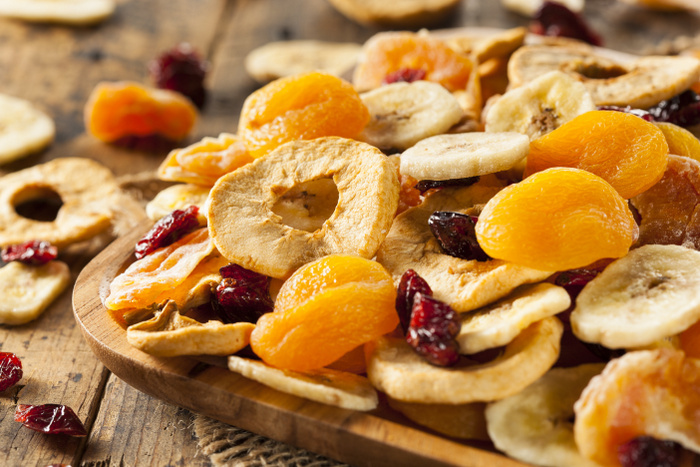
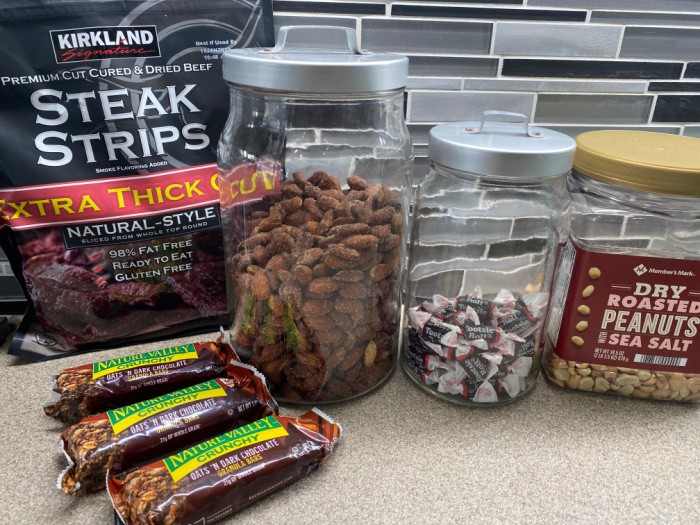
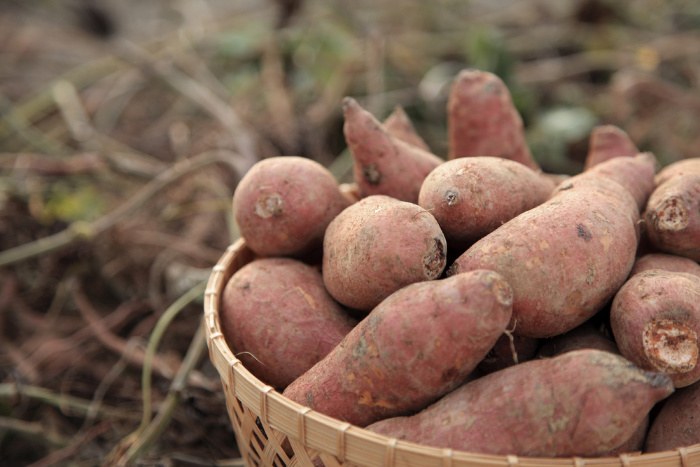
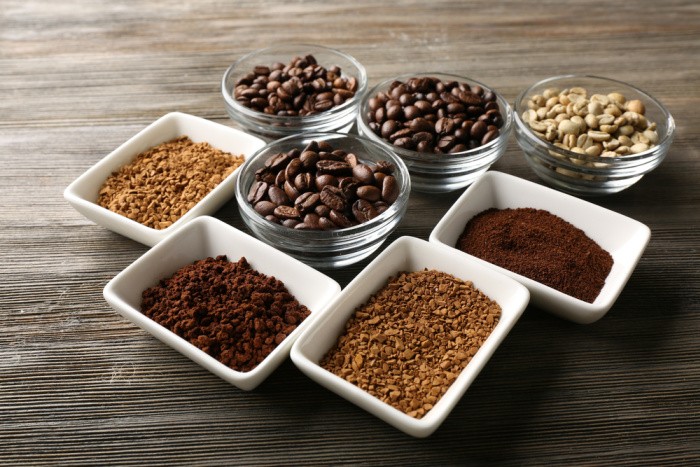
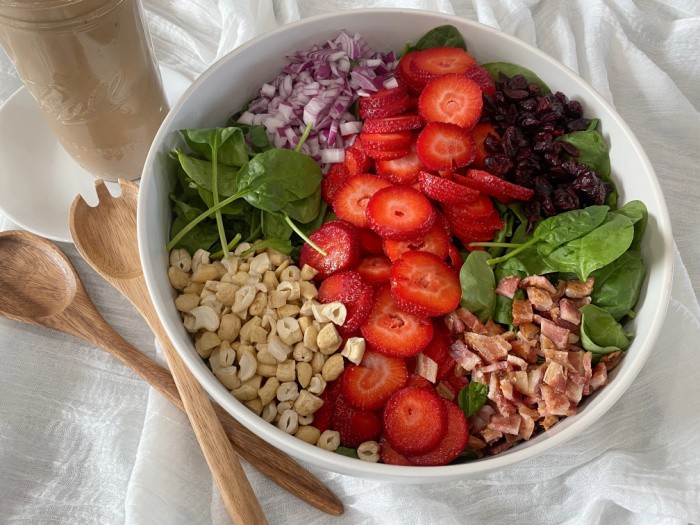
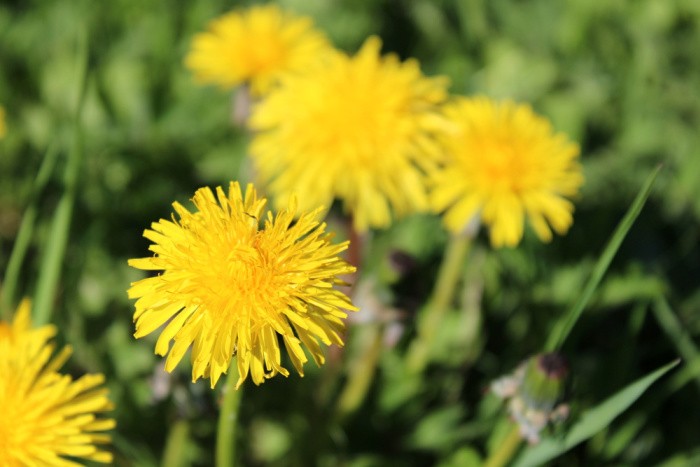














Linda, I recommend getting your honey from a local beekeeper if you don’t have your own hives. We get raw, unfiltered, honey from a local producer and I’ve heard taking as little as 1/2 tsp per day can help you develop immunity to local allergens.
Also, I had no idea molasses could be used to help preserve meat, so thank you for that useful piece of knowledge.
Question on the storing a piece of bread with brown sugar. Does the sugar keep the bread from going moldy?
I’ve never had white sugar go bad, and the sugar we’re using right now is more than four years old, so I’m wondering what happened. I’d always heard that white sugar, if protected from humidity, would last forever.
Hi Ray, I always thought white sugar lasted forever too. When I helped my daughter organize her basement food storage area, we tossed all the food storage food I had processed at a local church dry canning place. It has since closed, I think I know why, they were handing out open bags of oxygen absorbers. All the food we processed we had to put in the garbage, it was all rancid. My daughter had purchased this white sugar from the same church canning facility. I thought it would be fine (of course no oxygen absorbers in sugar or salt) but when we opened the can, it smelled so bad. I knew it was rancid. We threw out all the cans. I’m not sure why it smelled so bad but I can’t take a chance on getting sick. We all know we have had the various sweeteners longer than the websites state as best if used by dates. You would have tossed this sugar, it was so bad even my son-in-law said “what is that smell”. Enough said. When in doubt, throw it out. I used to throw out the piece of bread after a day or two. Yes, it would go moldy. I have never had white sugar go bad in my 5 gallon buckets ever.
I totally agree with the raw unfiltered honey. It does help with allergies if you buy local honey. Great reminder, my friend, Linda
Linda, makes me wonder if the cans were somehow contaminated before they were filled. You’re right about never using O2 absorbers with sugar (or salt(, but I use desiccant packs as a precaution and I live in an area with very low humidity.
My wife keeps brown sugar tightly wrapped in plastic in a vegetable drawer in our fridge and it takes several months before it even begins to go hard–then she has me break it up for her.
You’re right about when in doubt throw it out.
I keep our white sugar in 2-5 gallon buckets as well. Never had a problem. Jane likes the 2 gallon buckets for flour and sugar because they are lighter and easier for her to handle.
Hi Ray, yeah I love the 2-gallon size ones. That’s what is pictured in the picture. I still have the 5-gallon ones but Mark transfers what I need from the bigger ones. I’m not as strong as I used to be. Linda
I have had cane sugar stored for 7 years in 5 gallon buckets. with high humidity but sealed with nothing in it…was good.I live n a high humidity area… I don’t use much brown sugar or powdered sugar. so keep minimal of those and more of pure sugar. don’t prefer honey or molasses but have enough to use….for how i use them… I also use..dry fruit to replace parts of sugars in some recipes.
… there are forces in society that want us to throw out good food based on their bad data.
…..I have had molasses unopened for years and it was good when opened.
….A long time ago i bought oatmeal, cocoa powder , peanut butter for cookie makings… and i keep things to make chess type pies., and can make cakes from scratch.We have homemade syrups and jellies… we will not be desiring special things unless we are just too lazy to cook it.
Hi Denise, I have had sugar for many years in 5-gallon buckets as well. It feels so good having those items we use often stocked to make whatever our heart desires at any time. I want people to be aware of rancid sugars, that was my point today. I never thought white sugar would go bad even in a #10 can. It was so bad. Linda
I love making my own brown sugar. It tastes better, and I can go a little heavy on the molasses if I choose. I made chocolate cookies that way. They were delicious. Also, brown sugar tends to get very hard.
Hi Janet, once I learned to make my own brown sugar there was no going back. I never have hard brown sugar because I make it as you do. I also store it in those airtight glass jars. That was a game changer for me. Brown sugar does go hard, so now I make it and love it! Linda
Monk Fruit sweetener is great! I buy the powdered form in larger containers on Amazon; it is all natural (best not to buy the varieties mixed with other sweeteners) and has a good shelf life. Also, I keep brown sugar from hardening by putting a couple of apple slices in the jar with the sugar. Works great and doesn’t mold!
Hi Gwen, great tip on the brown sugar!! Thank you for the reminder on the Monk Fruit Sweetener! I need to try that! Thank you, Linda
I have been trying (unsuccessfully) to make a cinnamon powdered sugar. I have bought donuts with cinnamon powdered sugar, but they won’t give me their recipe or sell me any. Can anyone recommend a solution? Thank you.
Hi Chris, it will depend on how you like it but I have a jar that I add 1/2 cup granulated sugar
2 tablespoons ground cinnamon, and then I whisk it. The better quality of cinnamon the better. I use Costco brand cinnamon for baking BUT when I make my cinnamon-sugar I use this cinnamon: https://amzn.to/3QDuHsG Linda
I prefer the liquid sweeteners like molasses and honey to be in glass rather than plastic. Plastic degrades quicker. I then place the container in Mylar and seal it before shelving.
The 3 enemies of food storage are heat, air and light. The Mylar takes care of light. It might be overkill but it’s food for my family so to me it’s not.
Hi Matt, I never thought to do this but my food was in a climate-controlled bedroom with the window coverings shut. I like this, I may have to do it in my new house. Great idea! Linda
Matt:
If you have allergies putting anything in plastic is bad for you. I am slowly getting glass containers for everything I store. I have a bus load of allergies and have been told I am allergic to modern life and I am really allergic to plastic so when I empty a jar from something I bought I wash it put it where I can find it and then I throw out 2 plastic containers for every 1 jar. It can be hard to get things just in glass containers but I am slowly replacing everything in my kitchen with Glass.
Hi Jackie, I love glass conatiners over plastic as well. Great idea! Linda
I agree….you should get honey from the area you live in. Definitely a plus for fighting allergies in your area.
Hi Judy, I have heard that and it really does work! Linda
I came across a couple of videos on making “Rock salt” and “Sugar Rocks”. I don’t know how long these recipes or forms of salt and sugar will last, but it makes for an easy way to pack them into a kit of backpack. Instead of loose granules you can have rocks.
For Salt Rocks:
You pour some salt into a small pot of water and stir while on medium heat. Once the salt dissolves it can be poured into a mold such as a glass baking dish and then baked at 300* until the water evaporates. And then you have a chunk of salt
For Sugar Rocks:
Fill a pot with 1-2 cups of water and bring to a boil. The you begin to add 1/2 to 1 cup of sugar a little bit at a time. You stir as you add and the water will turn from milky to clear. You keep adding sugar until it no longer dissolves. (I imagine you might add a bit of water if needed.)
Pour the liquid into a 9×12 glass baking dish and bake at 320* for 5-10 minutes.
After reading your article I realize It’s always good to be flexible and open minded and consider other choices for sugars, salts and oils. And then we find certain items in solid, liquid, paste, powdered or granulated form. The latest trends often persuade us to change our buying habits.
In any case, we might miss out on things we might benefit from. In this time of food shortages, familiarizing ourselves with alternate choices would be wise. I remember when my mother used Crisco once in a while, but Canola oil became her go to cooking oil after we were told it was healthier than vegetable oil.
Hi Frank, oh I remember the Crisco days! We all used it. I use it in a few recipes but I buy it in cubes. I could not use one of those large cans these days. Thank you for sharing the Salt Rock and Sugar Rock tips!! We may all want to invest in some and be ready for anything that comes our way. Linda
I don’t know if anyone else is having trouble getting Molasses but we have not been able to find it where we usually shop where we live. We even go to stores 180 miles from us every so often and have not found any so far.
Hi Jackie, I just bought two bottles. Here is a link on Amazon: https://amzn.to/3pf0pkb It’s the same price I paid at the grocery store. Linda